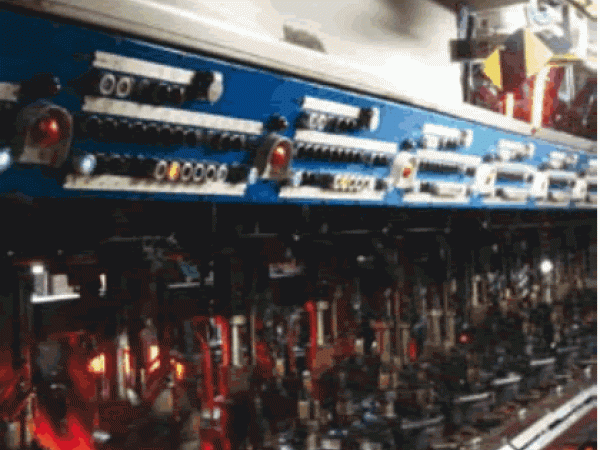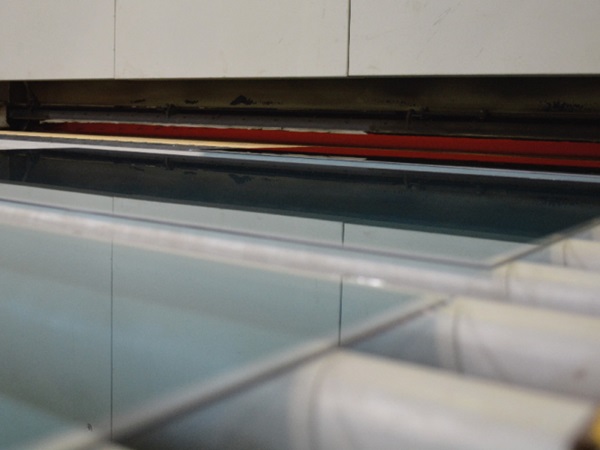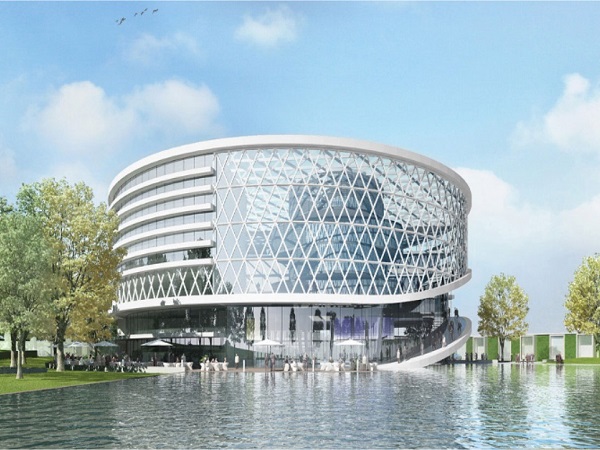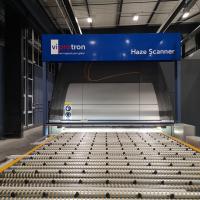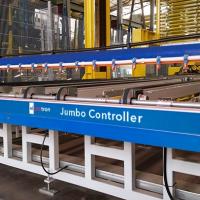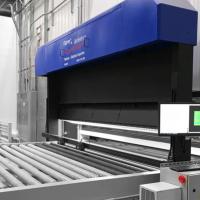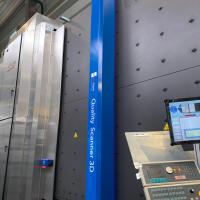Several Emhart Glass products are supporting the glassmaker to adjust various parameters of process to fine tune and stabilize the production with high precision and automation.
Process Control – Forming
The parison forming is one of the most critical forming steps in the glass container production. It determines the glass distribution of the container and the finish is formed during that process step. The PPC tracks and records the entire plunger motion and visualizes the stroke of the plunger while forming the parison. The acquired information is a vital source for process improvements which leads to a higher container quality. PPC keeps the gob weight on a stable level which is essential for NNPB and PB production.
.jpg)
FPS technology provides high performance and very flexible pressure control for the plunger movement and for counter blow/plunger cooling. With up to 4 different pressures per cycle the parison forming process can be tightly controlled and optimized. PPC together with FPS is the ultimate pneumatic combination for high quality parison forming. The latest edition to the FPS family is the Final Blow FPS valve. This allows optimizing the two functions of the final blow - blowing the bottle and cooling the inside - with individual pressures.
Process Control – Cooling
Mold cooling, a key process to cope with current market demands include production speed, flexibility, quality and lightweight. A predictable and efficient cooling system is a must to accomplish a good container quality and an elevated production speed. Such a high efficient cooling offers also more production flexibility, especially as far as special shapes are concerned. The available service tool TekPak, calculates in function of the 3D CAD mold and the process parameters the 3D mold glass contact temperatures and ensures the predictability. However, a successful cooling system has to serve different needs on the blank and on the blow side.

Blank Side
The final container glass distribution is primarily set by the blank mold temperature profile and the resulting parison quality. Therefore a predictable, adjustable and stable blank mold temperature grid is vital to achieve a high container quality. The blank cooling is in fact a parison conditioning system.
The well established VertiFlow concept provides very efficient cooling system. In addition InvertiFlow improves the cooling especially in PB and NNPB and with additional advantages of easier access to molds and reducing the temperature of the top plate of the section. Both blank cooling systems also have independent neck ring cooling and certain conditions allow separate cooling for each blank mold half
Blow side
On the blow side, cooling leads to the stability of the container. This stability defines the production speed. The cooling capacity has to be predictable and high. It is also important to use cooling wind as efficient as possible and not to waste energy. With the VertiFlow through bed system Emhart Glass supplies a very efficient and powerful cooling concept. In addition the Auxiliary Blow Side Cooling can further increase the cooling capacity on the blow side and offers potential for significant speed increases.

Temperature Control System – TCS
The TCS is a pyrometer based system to monitor the temperatures on mold equipment parts on the blank side of an IS machine. The high speed pyrometer is mounted on an automatic precision positioning system. The system allows tracking the temperatures of several points of the section including blanks and plungers and providing valuable information to maintain constant temperate conditions for a stable forming process.
Utilizing all possibilities of modern process control of IS machines provides the tools to increase speed and efficiency of the production. Emhart Glass process products offer a wide range of possibilities to support the high quality demands of our customers markets with advanced solutions.
Christian Fröba, Product Manager, Emhart Glass SA

